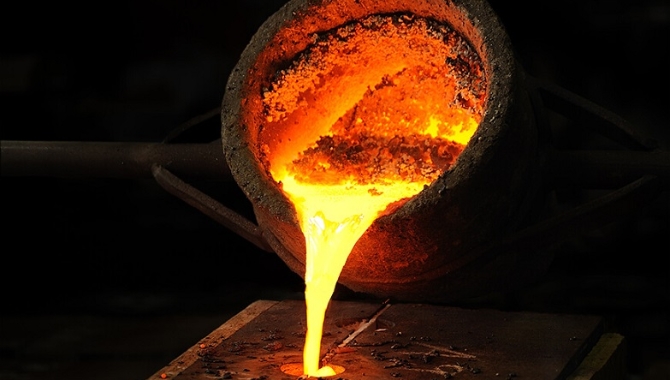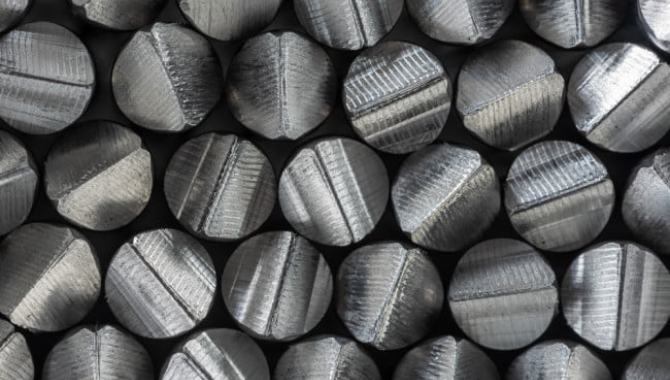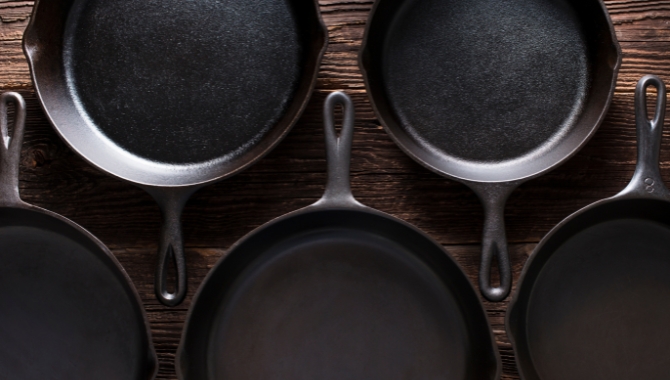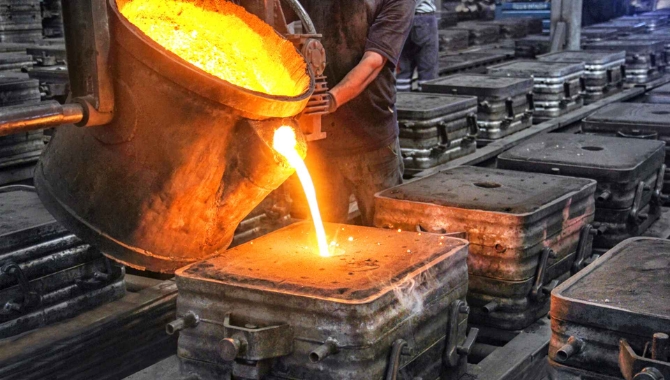What is Cast Iron?
Cast iron is a group of iron-carbon alloys with strength and corrosion resistance excellent for many manufacturing applications. As a business owner, you need cast iron because it holds up under extreme loads and high heat. It consists of iron, carbon and silicon, it’s a material that is known for its cost-effectiveness as well as the versatile application range in multiple industrial scenarios.

Properties of Cast Iron
First off, what makes cast iron an indispensable material in industrial manufacturing are some of the following properties.
- Strength and Durability: Cast iron is super-strong, which makes it perfect for parts that have to bear a lot of responsibility. This is important when producing high-quality products, especially in an industrial environment, where your merchandise must be almost bulletproof to withstand all hardships.
- Hardness & Wear Resistant properties: Due to its hardness, cast iron lasts longer than other materials and it is resistant against wear for wide range of applications. This property is especially beneficial in manufacturing processes like the metalworking industry because it allows possibility of preserving components from friction and, subsequently expectantly elongating its shelf life.
- Heat Retention: This is arguably one of the most crucial aspects that make cast iron ideal for cooking equipment, as well engine blocks. This results in improved thermal management and reliability when operating under demanding heat loads — ideal for manufacturing.
- Machinability: For its strength and hardness, cast iron is still a very machinable material. This makes it easier to craft detailed designs and exact components, ultimately providing you with more versatility in your manufacturing processes.
- Corrosion Resistance: With natural corrosion resistance, cast iron is ideal for parts that will live in outdoor and industrial environments where they may be exposed to the elements. This lower maintenance requirement translates into saved long-term operational costs.

Types and Applications of Cast Iron
Now, you have an idea about its properties, so let’s take a detailed look into types of Cast Iron and the areas in which they are appropriate for your Industry.
- Gray Iron: Gray iron is the most widely used type, and for good reason — it has excellent machinability properties as well as thermal conductivity. Gray iron has optimal for instance engine blocks, machine components and cookware in your business where mechanical property resistance is needed as well as efficient heat management.
- White Iron: A wear resistant, extremely hard and brittle white iron rich in carbides. Used primarily for abrasion resistance. For example, you may choose to use white iron for creating a wear-resistant surface like liners or grinding balls as they face continuous friction need to withstand high levels of abrasion.
- Ductile Iron: Ductile iron is characterized by its increased ductility and impact resistance, making it ideal for automotive components,machinery. Since it does not crack after being subjected to shock, this compound is perfect for creating gears, pipes and other important components in your manufacturing processes.
- Malleable Iron: Malleable Iron is subjected to a heat treatment process that improves strength and ductility. This type usually is used for small casting applications such as brackets and fittings, offering a good strength with the ability to bend safely over time.

Challenges and Limitations of Cast Iron
But cast iron, for all its virtues, has some serious drawbacks. This is what you need to know in order not to be intimidated by this material.
- Brittleness: Cast iron can be very strong, but it is also extremely brittle. In relatively rare cases, this brittleness can lead to fracturing under heavy impact or stress. And as for components design to witness those conditions, it would be prone to degradation and/or failing over time thereby shortening the life span of such an application.
- Heavyweight: As opposed to more lightweight options, cast iron tends to be heavier, making it problematic when weight is a key factor in applications. In such conditions, it becomes necessary to search for different materials or a design that balances weight with strength and functionality.
- Machining Complexities: Cast iron can be machinable, but its abrasive nature presents some challenges. The latter may include longer tool life and special machining practices. So the better you understand these, the more effectively can your production processes be optimized, costs managed and quality maintained.
Cast Iron Manufacturing and Environmental Impact
It’s an impressive choice for sustainable manufacturing because cast iron is recyclable. Recycling old cast iron by melting it down and reusing the metal has a number of benefits to the environment including reducing demand for new raw materials, which helps conserve resources.
Cast iron production, however high energy consumption and large emission of greenhouse gases associated with such activity. And in order to reduce the negative influences, you should use proven energy-saving technologies and make recycling a regular part of your manufacturing. This helps you decrease your carbon footprint and encourage eco-friendlier manufacturing practices.
How To Quality Control In Cast Iron Production

Cast iron products keep your name and reputation but also have to be protected on-premise. This could be done so.
- Material Selection: The casting iron material is the first thing to guarantee that the casting of cast iron products will not lose quality. As a business owner, you need to constantly contact your suppliers and monitor that the iron, carbon and alloying elements are at their required levels.
- Casting Techniques: In casting, accurate precision of the casting techniques is vital to creating standard high-quality cast iron components. Remember that properly controlled casting processes will also reduce defects, improving product quality.
- Rigorous Testing: The rigorous testing such as non-destructive testing (or NDT) to check whether the cast iron components have fulfilled their specifications or not. When you put quality control ahead of the production line, your products will be more reliable and customers happier.
Demand for Cast Iron and Market Trends
Being able to keep up with what the market is doing next. Below, we take a look at what is going on with cast iron in the market now, and where it might be heading.
- Market Overview: The market is showing no signs of slowing down with huge demand for cast iron in the automotive, construction and heavy machinery industries. Becoming informed about these changes will help you predict demand fluctuations and allow for adapting your manufacturing strategies as needed.
- Future Projections: The demand for cast iron could further rise in prospects, due to advanced manufacturing processes and increased use of tough materials. These are the trends of tomorrow to let on know, so you align your companies right now for leveraging emerging business opportunities.
- Impact of Global Supply Chains: Cast iron is heavily reliant on global supply chains and its availability it can vary with that, which will impact the cost. By keeping tabs on these supply chains, you will be able to optimize sourcing and pricing, using data for your business to continue driving the competition.
FAQs About Cast Iron
How to Keep Cast Iron from Becoming Too Brittle?
You may avoid cast iron’s brittleness by simply selecting the appropriate type of cast iron that you need for whatever application is needed. Follow the high-end machining processes and take it a step further, harden it to near indestructible heights through multiple heat treatments. Follow these steps to reduce the likelihood of cracking and improve part quality.
How affordable is Cast Iron Compared to Other Metals?
As such, cast iron is usually a more cost-effective choice than metals like steel or aluminum. Because it is affordable, robust and durable, this makes it a perfect option for many manufacturing requirements. In this manner, you can keep the cost of production down and still implement quality results.
What Kind of Cast Iron is Best Under High Heat?
It is commonly used in applications where heat and thermal conductivity are important because gray cast iron has higher thermal conductance, which allows it to retain the heat. It is also a material that performs well in hot conditions, making it more and more used for example in engine blocks or industrial equipment exposed to high temperatures.
Is Cast Iron Good for The Environment?
Cast iron is recyclable and promotes sustainable manufacturing practices. Now, of course the production process is an impact on the environment but you can always produce energy efficient and circulate it. Therefore, your carbon footprint gets smaller as a result while everything contributes to eco-friendlier operation.
Conclusion
Cast iron has a vital function in numerous business applications because of its special properties, and flexibility. Knowing its advantages, issues and up-to-date market trends will help you to make the most of this material in your manufacturing processes with great success on behalf of your business.




